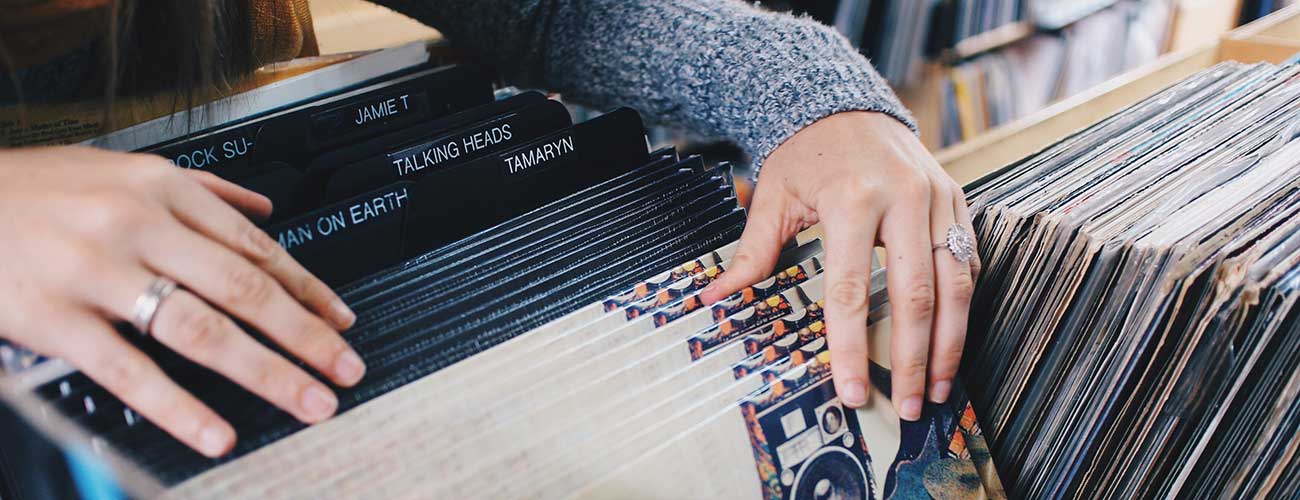When Paste magazine first hit newsstands in 2002, each issue came with a CD sampler of songs from up-and-coming bands featured in the pub’s pages. The popular promotion helped Paste, which began as a quarterly then ramped up to bi-monthly, quickly climb the music-mag charts, peaking at more than 100,000 subscribers. But just as the compact disc gave way to digital downloads, the internet crippled print ad rates, and in 2010, Paste was forced to abandon its book and join the growing ranks of web-only publications.
Then a few years later a funny thing started happening in the music world. Audiophiles yearning for a more tactile experience turned to a medium largely thought to be dead–vinyl records. Part of the LP revival was due to nostalgia, but music lovers also wanted something they could hold, keep, and collect–something that lasts. Now Paste, which is based just east of Atlanta, is betting that devotees to the printed word, particularly in-depth stories about music and pop-culture, feel a similar yearning for the old-fashioned feel of ink and paper. Paste Quarterly, the title’s first physical book in nearly seven years, hits mailboxes this March.
And in true Paste fashion, the issue also includes a music sampler of exclusive material recorded by bands in the Paste Studio in New York. The compilation will be pressed on 150-gram, sea-foam green vinyl.
“The whole idea of having a print magazine is to have something that is worth saving, something that feels wonderful and tangible and has this collectible quality,” says Josh Jackson, who co-founded the magazine with two college buddies and has stayed on as editor in chief of the website. “You’ll want to put it out on your coffee table or on your bookshelf.”
Paste is just the latest pop-culture pub to dip a toe back into ink. In 2014, Chicago-based online music mag Pitchfork launched Pitchfork Review, a quarterly dedicated to long-form writing, comics, sweeping photography, and design. Last October, New York-centered Spin put out its first print edition in four years.
“Our job as a music publication is to give the readers things to read, things to contextualize, things to discover but to also, maybe subconsciously, emphasize how important music is as an art form,” says Chris Kaskie, president of Pitchfork. “And as we discussed how to best display that ideology, we thought that, in the same way that an artist creates a record and presses vinyl, for us, this was a way that we could create what we thought a music magazine should look like, something that could be representative of a time and place but also something you could look back on forever. It was our version of putting a record out. There’s some nostalgia attached to it; there’s some defiance. It’s all rooted in the celebration of music as an art form.”
But bibliophiles might hold off on firing up their presses for the revolution. Publishing consultant Lou Ann Sabatier says that while print is far from dead, with hundreds of magazine launches each year, it’s very rare for a title to return to print after going all in on the web. And when they do, it’s usually in a much different way–there’s no going back to the way it was.
“They’re coming back very different,” says Sabatier of Paste. “They’re really marketing it as part of a platform, of which print can be an anchor. It’s a different experience. Longform journalism is really tough, digitally. People now will scroll down for more than 800 words, but if there’s something they want to delve into, sometimes you want to hold it and you don’t want it to go away. You want to study it. You want to be with it.”
Jackson agrees. Despite this heralded return to the physical page, he’s under no delusion that Paste will be anything other than a web-first publication moving forward, and he’s not the least bit sad about the fact. After the initial growing pains of going solely digital, the re-staffing and re-focus on daily content, the site is now attracting more than 7 million unique visitors each month. In recent years, they’ve expanded their coverage from primarily music and film to include television, comics, politics, and drinking. The staff of 13 full-timers and 26 part-timers is twice as big as it was during the print-mag’s peak, and, in Jackson’s opinion, the quality of the writing has finally caught up.
“The idea of going back into print is not so much to try to recover the glory days of Paste,” says Jackson. “We wanted to create something for our core audience that would augment what we’re doing online.” Having learned the hard lessons of newsstand sales and ad rates, Paste Quarterly is crowd-funded, and as of January 20, the Indiegogo campaign had raised more than $147,000, exceeding its $100,000 goal by nearly 50 percent.
“I believe that there is a place for a luxurious, very special publication that comes out infrequently and is expensive,” says Jackson. “If the readers are paying for the costs and you’re not relying on advertising you can do something really beautiful and big. Something that feels like an event when it shows up in your mailbox.”
The first issue costs $20; a year’s subscription runs $70. The hefty price tag buys a 12-by-12-inch, thick-stock book packed with the lush photography, illustration, and longform writing that would feel constrained by a screen, along with an LP you can hold, pull from its sleeve, blow off the dust, and drop the needle while you unplug with a good book.
Tony Rehagen has written for Pacific Standard, GQ, Bloomberg, and ESPN The Magazine. He is based in St. Louis and is on Twitter @trehagen.

